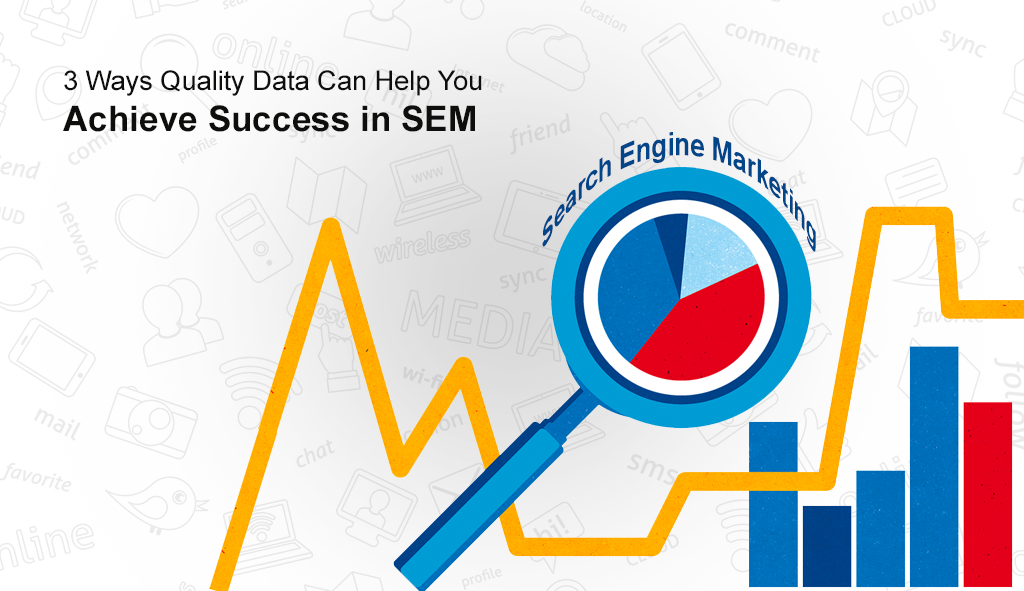Quality vs. quantity. This is most important in the world of search engine marketing. People use data to measure performance, set goals, and drive the decision-making for paid search programs. Data is everything. It helps to:
- Measure value.
- Allow to define strategies and boost performance.
- Be the driving force behind work.
But data isn’t the only key to higher value and better performance. The operative piece is actually quality data. No decision is more important than defining and executing on a bidding strategy.
Without good data, it doesn’t matter how sophisticated the algorithms or optimization techniques you apply to your program. Your performance will lag behind of its peak potential. The lack of data set poses a significant challenge for most SEM programs. Solutions come with capturing and leveraging the right data can have a meaningful impact on the success of an SEM program.
The fewer ways are:
- Higher Revenue & ROI
Data has the ability to increase the business performance. By measuring, tracking, and analyzing data on past performance, you can make smarter decisions. These deliver improved results.
Certain core categories of data can be directly applied to increase SEM ROI.
Search teams can empower smarter and more profitable bidding decisions by tying:
- Analytics data from web and mobile tracking solutions.
- Offline data from call centers or CRM platforms.
- Inventory or capacity systems that track real-time supply constraints.
- Contextual data back to SEM data.
Without leveraging data, large SEM programs can’t achieve peak performance. A unified data set will also offer insights into how deep your prospects are in the funnel. Also, it can show the valuable milestones of the customer journey. Achieving peak performance is hard. But the foundation to get there requires investing in a platform that does two things:
- It collects the right quality data.
- It then allows you to apply that data to sophisticated algorithms to automate bidding optimization at scale.
- Historical Context For Better Decision Making
Minimize the all-too-common and expensive “bidding learning period”. The quality of data you feed into the new platform is of utmost importance. If you don’t integrate historical data, your team may struggle to see patterns that drive profitable strategic decisions.
When it comes to SEM, almost every business experiences seasonality. Promotional events, holiday periods, or monthly trends.
Ideally, your future promotions and seasonal strategy learned from past successes and failures. Likewise, your bidding strategy should leverage data from past seasonal periods to guide future bids.
Strong historical data is capable of providing the right context required for the best results. But you’ll need the right platform.
Paid search professionals are often forced to write off their bidding platform to control the bids themselves. Real trust derives from good data put to use.
- Differentiate From Competition
Quality data powers advanced techniques and capabilities in your bidding solution. These types of feature enable advertisers to achieve best performance and beat competition.
Take forecasting and scenario modeling. While predicting the future isn’t new to the industry, it’s far more accurate when fueled by reliable and comprehensive data.
Proper data science methodologies should be used to model this data. Thus, it is possible to discover higher performance and drive the greatest value from customer audience data. That’s a key requirement to achieving peak performance.



